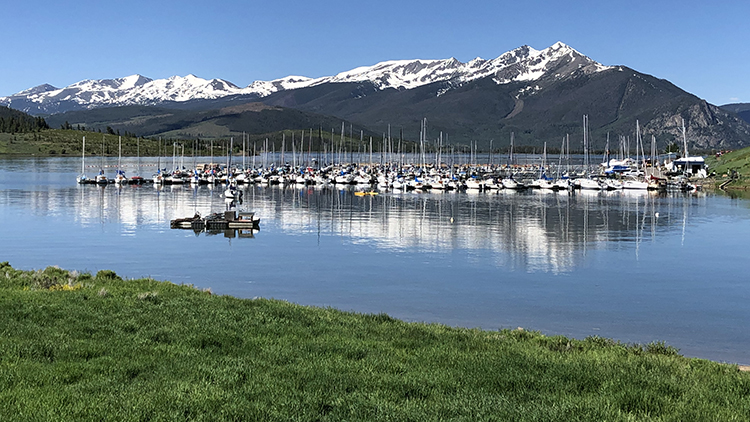
In 1956 the government of Dillon, Colorado made an agreement with the Denver Water Board. The Denver Water Board would build a dam that would bring water to Denver. It would also create a lake where Dillon was located. The people of Dillon would have five years to sell their land to the Denver Water Board and move.
Some people sold their land and left the area. Some traded for land the Dillon Water Board owned on the hillside nearby. This would be the new location of Dillon, Colorado. Some people built new houses or businesses at the new location. Others moved their buildings brick by brick to the new location.
Some people didn’t want to move. They didn’t sell their land until the last minute. Some people stayed until the water of Lake Dillon began to rise. Does it seem fair that people had to move?
Local, state, and national governments can take private land to build something for the public use. This is a law called eminent domain. The Fifth Amendment of the United States Constitution does protect landowners, though. It requires the government to give property owners “just compensation.” This means the government must give property owners something of fair value for their property.
Creating the lake in Dillon was an example of eminent domain. Today governments use eminent domain to do things like widen roads, build new highways, or train tracks. Though it is legal, eminent domain remains controversial. People often disagree about what “just compensation” means. They sometimes disagree whether certain public use projects are necessary.
What Do You Think? When do you think the government should be allowed to make people move? What do you think is just compensation?
Photo Credit: Katherine Rossetti Lobus



